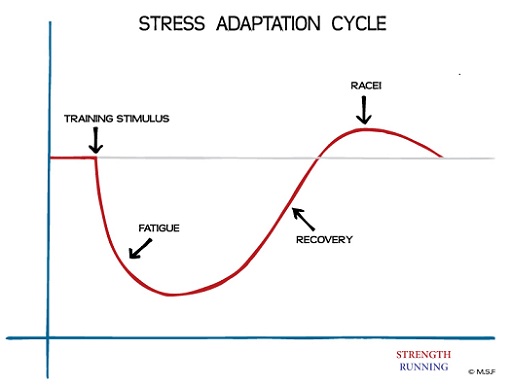Are you a creature of habit?

I definitely am. My training is predictable even though I know the serious benefits of variety in any program. I run the same trails, do similar workouts from training cycle to training cycle, and always stick to the same core routines. This needs to change if I want to continue improving.
In one particular area I need a lot more variety: strength exercises. Unfortunately, my gym workout almost always looks like this:
- Dead lifts
- Chest Press
- Pistol Squats (one-legged squats)
- Pull ups
- Dips
It’s not bad: these are compound movements and I know the dead lifts and pistol squats address some of my own personal weaknesses. But is it the best it can be? Absolutely not. And even more important: it never changes from week to week.
Over the last six months, I’ve fallen into the trap of never deviating from my own comfortable routine in the gym. I kept my gym time to about 15 minutes and only two sets of these exercises. If you listened to a recent podcast I did, you know that I hate lifting – but I realize how powerful it can be to transform you into a stronger, less injury-prone runner.
Just like running, there needs to be a well thought-out progression of gym exercises that help you safely build strength and recovery. This is one of the reasons why I use the Strength Training for Runners program. A new routine will get me out of my comfort zone, doing a variety of lift exercises that will stimulate strength gains that you just can’t get from the same few exercises every week.
The principle at work here is the stress-adaptation cycle, expertly illustrated by Meaghan below:

This cycle isn’t true for just mileage and hard workouts. You can also include the types of workouts you’re doing and a host of other stresses – like gym workouts. If you do the same track or gym workout every week, you’ll gain less fitness as time goes on.
Instead, it’s best to vary your workouts, gym routines, mobility exercises, shoes, terrain, paces, effort, and everything else to ensure your body is constantly adapting.
Consistent Variation in Rigid Training
Recently I announced the Building a Better Runner giveaway (Edit: this giveaway is now over). The DVD series includes two volumes of two discs each – so four DVDs of mobility, strength, and warm-up exercises. As I watched the routines and the rationale behind why distance runners should do them, it made me realize that I can do a lot to improve my own athleticism.
Jay Johnson recently posted something that stuck with me:
For many high school and college athletes, you can’t get enough strength and mobility work done in 15 minutes, so you need more time. I want to make sure that coaches and athletes who are trying to maximize their potential are honest about the fact that the more ancillary work you can do, the more running you can safely handle.
I’m not a college runner any longer – but I do run at a (somewhat) high level. My recent marathon training block had me running over 340 monthly miles with 22 milers and tough workouts. Is 15 minutes of strength and mobility work enough for someone running at my effort level? And for that matter, are the same exercises done every day for 15 minutes sufficient?
I don’t think so. The routines I do include Cannonball, Myrtl, Standard Warm-up, ITB Rehab Routine, Lunge Matrix, and the Standard Core Routine. Most of these are done in about 10 minutes – which is great – but I need more volume and more variety.
I’ve started a great yoga routine for my hips and I think the Building a Better Runner DVDs will provide the running-specific strength that’s necessary for continued improvement. Doing new exercises and new routines can help correct imbalances and prevent injury.
The title of this section might seem confusing but it’s actually simple: within a consistent training plan, there should be a lot of variation. No, you’re not doing random workouts or exercises all the time. Everything’s planned – even the variation.
Let’s look at a few examples of how variation can be included in your plan without it being arbitrary:
- Rotate 3 pairs of shoes instead of none at all
- Instead of that typical 5k tempo you do every Tuesday, run a 100m surge every kilometer to break up the pace
- Replace a short interval workout with a similar hill workout
- Run more trails instead of the roads – the terrain changes are excellent for your supporting muscles
- Don’t finish your easy runs slow – run a slight negative split or add strides or surges at the end (they won’t make you tired!)
- Use different exercises in the gym to target the same muscle group (bench press vs. chest press vs. incline/decline bench press)
Are you stuck in your ways? Break out of the rut and reinvigorate your training!
As I make these changes in my own training, Building a Better Runner is going to be incredibly valuable to help me explore new movement patterns and develop more skill in moving in three planes of motion.
It’s important to always try new things and I can’t wait to get started. With over 100 different exercises, my wife is going to have to upgrade my nickname of “core whore” to something even more explicit.
Recommended reading:
- Core Performance by Mark Verstegen
- Strength Training for Runners by coach Jeff Gaudette